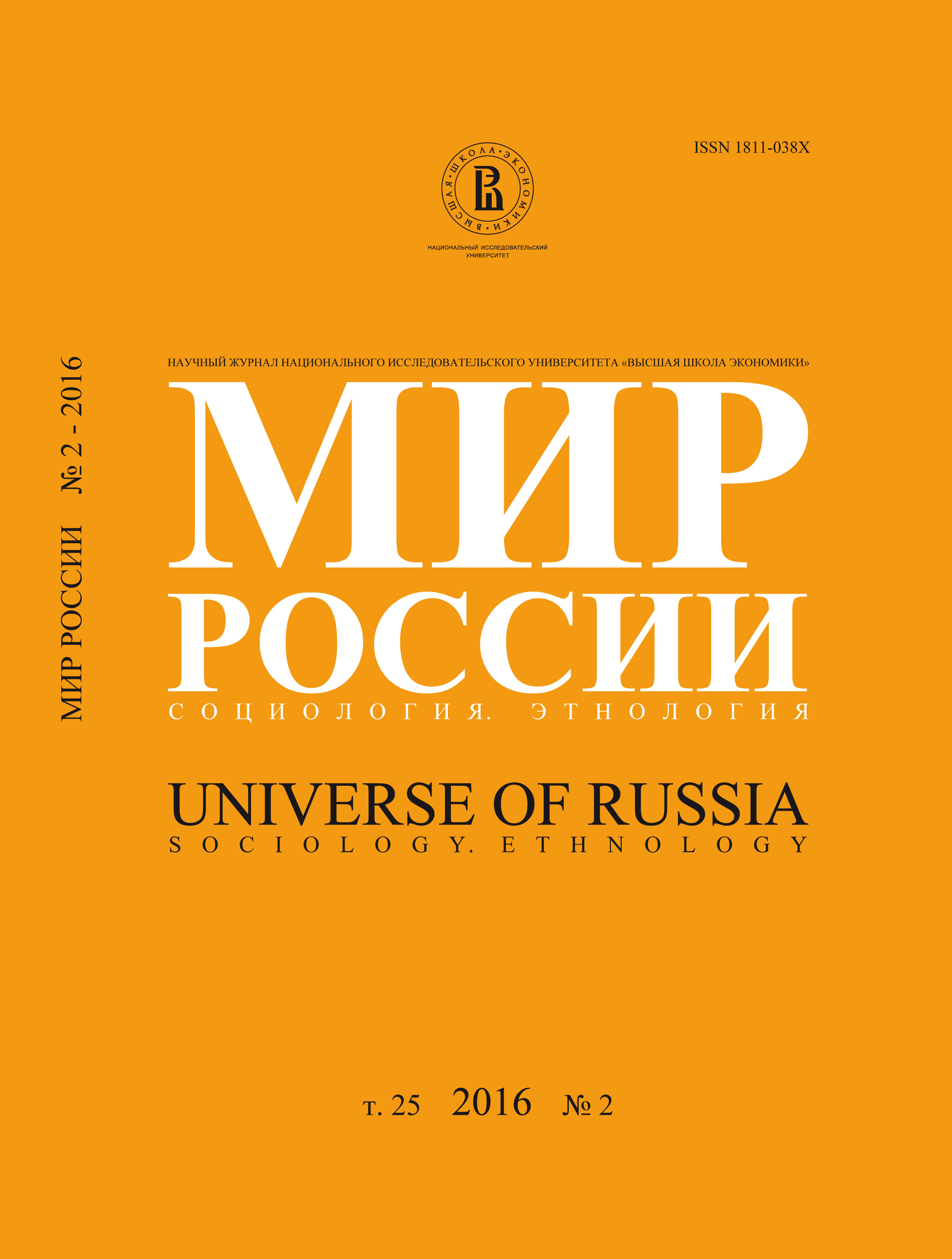Social Mobility in Soviet and Post-Soviet Russia: a Revision of Existing Estimates Using Representative Surveys of 1994, 2002, 2006 and 2013. Part 2
Abstract
Gordey Yastrebov — Candidate of Sociological Sciences, Senior Researcher, Laboratory for Comparative Analysis of Post-Socialist Development, Higher School of Economics; Doctoral Student, the European University Institute. Address: office 553, 12, Malaya Pionerskaya St., Moscow, 115054, Russian Federation. E-mail: gordey.yastrebov@gmail.com
This article revisits the evolution of intergenerational social mobility in Soviet and post-Soviet Russia. In particular, it looks at historical changes in the residential, educational and occupational mobility of Russians. The study contributes to the literature by extending the spectrum of institutional and historical contexts in which the (in)equality of opportunity has been considered so far, re-examining existing evidence by using alternative datasets and a different methodology.
For the empirical investigation I utilize data from four representative cross-national surveys conducted in Russia in 1994, 2002, 2006 and 2013. Following the theoretical arguments developed in the comparative social mobility research and being informed by their empirical findings, I anticipated (1) a trend towards lesser openness in the late years of the Soviet era; (2) a temporary discontinuity of mobility patterns during the turbulent 1990s; and (3) a stagnation of social mobility in the more stable years of Russia’s post-Soviet history. However, my findings reveal no unambiguous trends suggested by previous research, moreover they contradict some of the earlier evidence. In particular, I found (1) steadily decreasing residential mobility both in absolute and relative terms (implying the increasing closure of residential communities); (2) a weakening link between parental and child educational attainment in the post-Soviet era; and (3) the invariance of social fluidity in terms of occupational attainment both in the Soviet and post-Soviet periods. The article concludes by highlighting some of the remaining questions and possible
directions for future research.
Published here is the second part of the article. It begins with a discussion of log-linear modelling, a technique which is used to analyse mobility tables and to explore patterns of relative social mobility. In the rest of the article I discuss the empirical findings with regard to the three dimensions of social mobility outlined above. Finally I draw conclusions generalizing the findings from both parts of the article.






